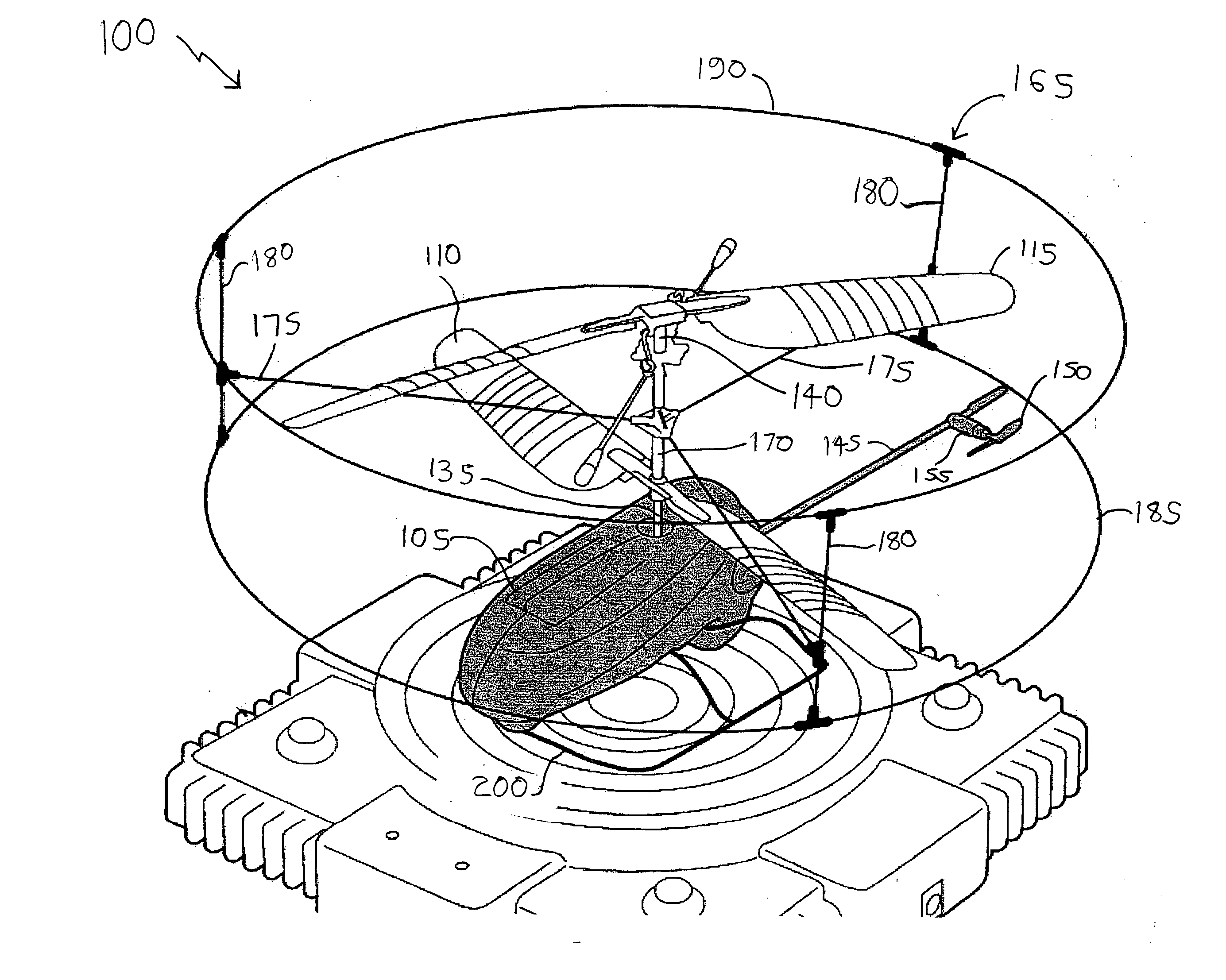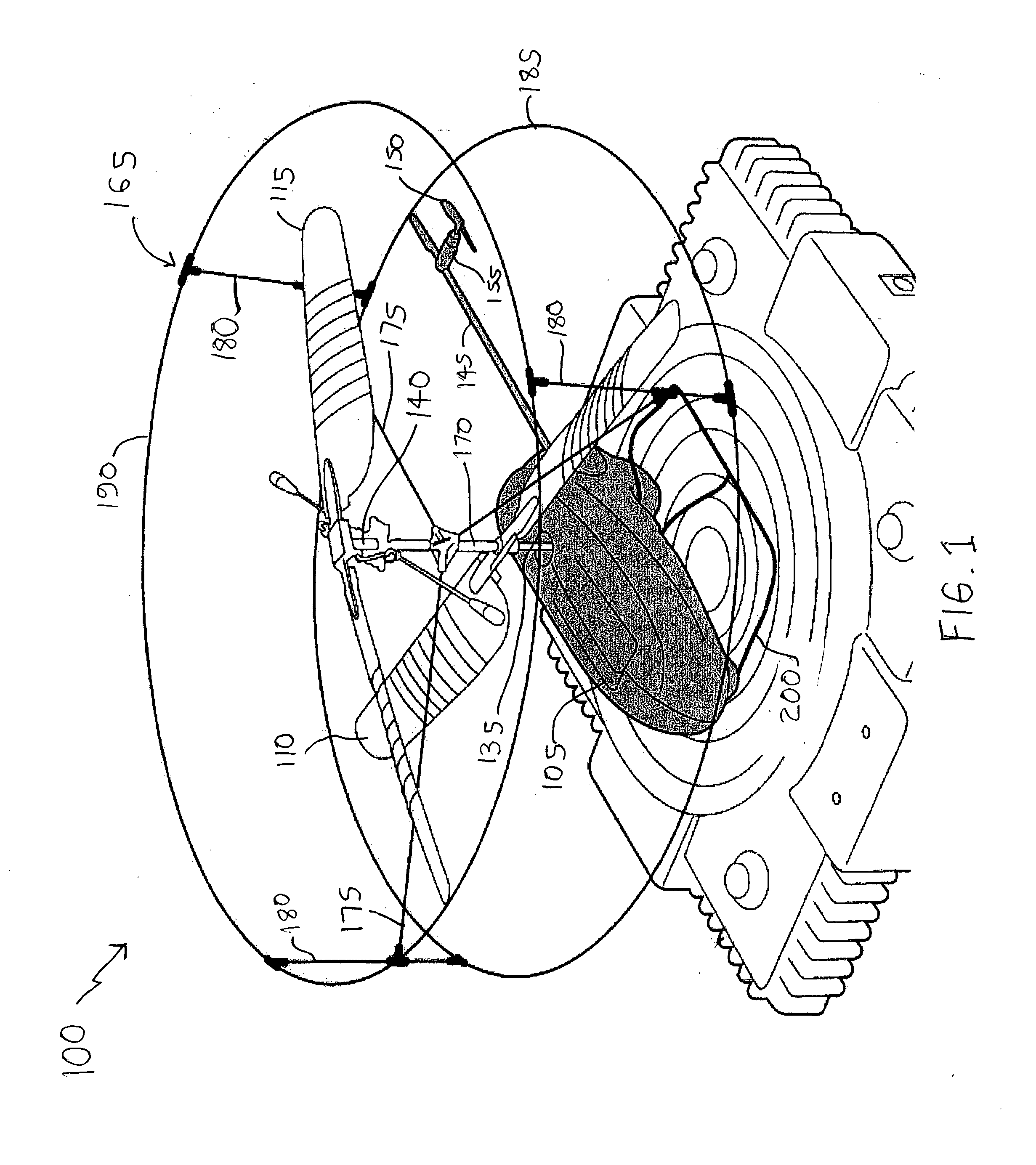Radio controlled helicopter
a technology of radio control and helicopter, applied in the field of helicopters, can solve the problems of disadvantages, mechanical complexity, and difficulty in coordinating directional flight controls, and achieve the effect of preventing damage to the first rotor and safe operation of the inventive helicopter
- Summary
- Abstract
- Description
- Claims
- Application Information
AI Technical Summary
Benefits of technology
Problems solved by technology
Method used
Image
Examples
Embodiment Construction
[0018] The present invention provides an easily operated radio controlled helicopter, by eliminating or simplifying the sideslip flight control. In an embodiment of the present invention; a forward directional flight path is achieved by placing the center of gravity of the helicopter forward of the center of lift (i.e., the center of the rotor(s)) by locating the power supply battery in a forward area of the helicopter fuselage. The result is a helicopter which is always moving forward and inherently stable. The pilot need only be concerned with power, which controls altitude and descent, and with left / right steering, which is effected through a conventional tail rotor that controls yaw.
[0019] In certain embodiments of the present invention, a helicopter comprises two counter rotating rotors which are driven by a single motor at a fixed 1:1 relative rotation speed. The forward speed of the inventive helicopter can be adjusted by manual movement of the battery relative to the forwar...
PUM
 Login to View More
Login to View More Abstract
Description
Claims
Application Information
 Login to View More
Login to View More - R&D
- Intellectual Property
- Life Sciences
- Materials
- Tech Scout
- Unparalleled Data Quality
- Higher Quality Content
- 60% Fewer Hallucinations
Browse by: Latest US Patents, China's latest patents, Technical Efficacy Thesaurus, Application Domain, Technology Topic, Popular Technical Reports.
© 2025 PatSnap. All rights reserved.Legal|Privacy policy|Modern Slavery Act Transparency Statement|Sitemap|About US| Contact US: help@patsnap.com



